Tempeh
Making Tempeh at Home
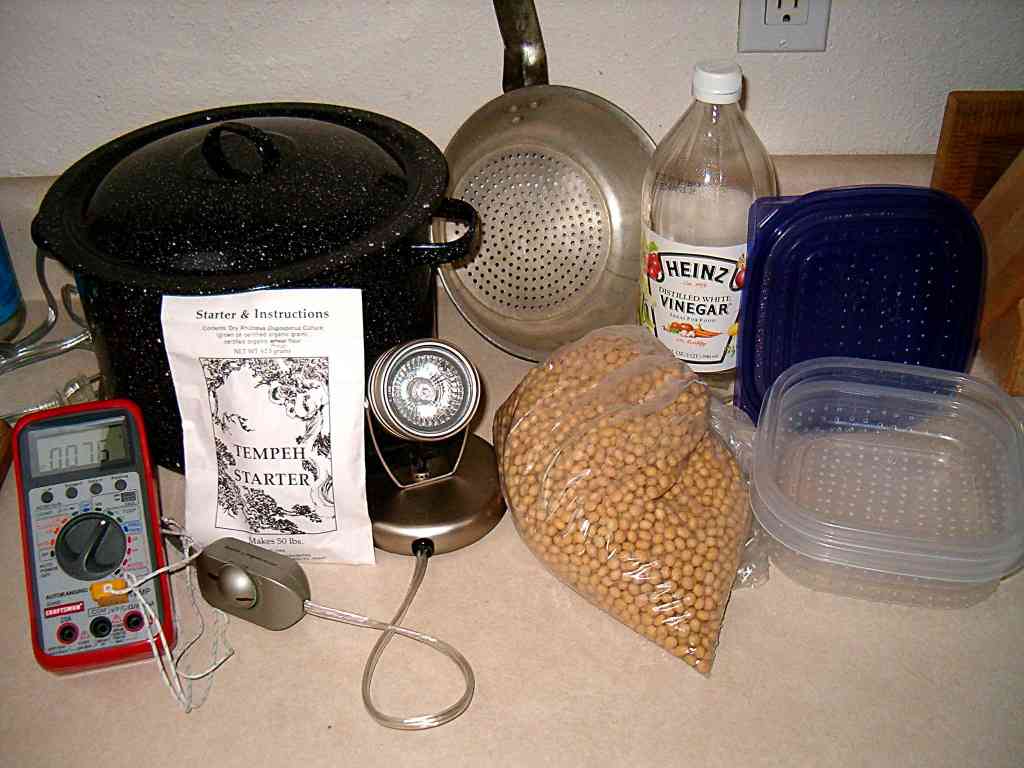
| Hardware: |
Ingredients: |
| Large pot for boiling beans and steaming tempeh |
Organic Soy Beans – 2 cups |
| Thermometer |
Vinegar – 2 Tbs |
| Light with dimmer switch |
Tempeh Starter – 3/4 tsp |
| Mixing bowl |
|
| Colander for steaming tempeh |
|
| Containers with holes for making tempeh in |
|
Procedure
| Step |
| 1 |
Measure 2 cup of dry soybeans – we use organic. |
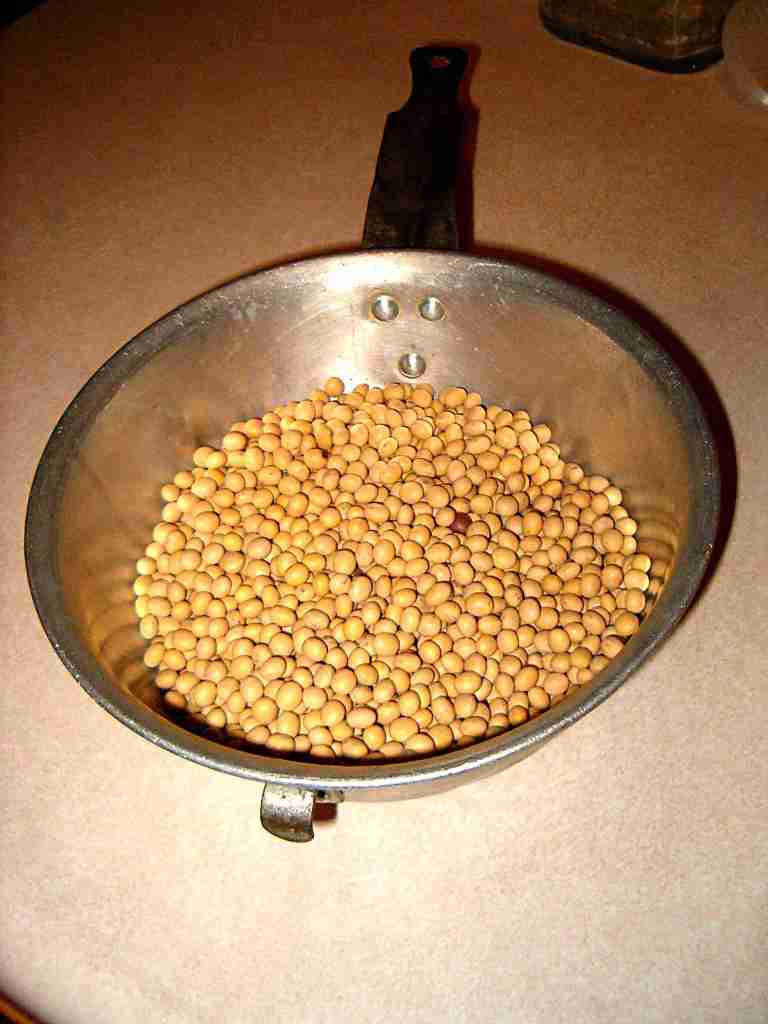
|
| 2 |
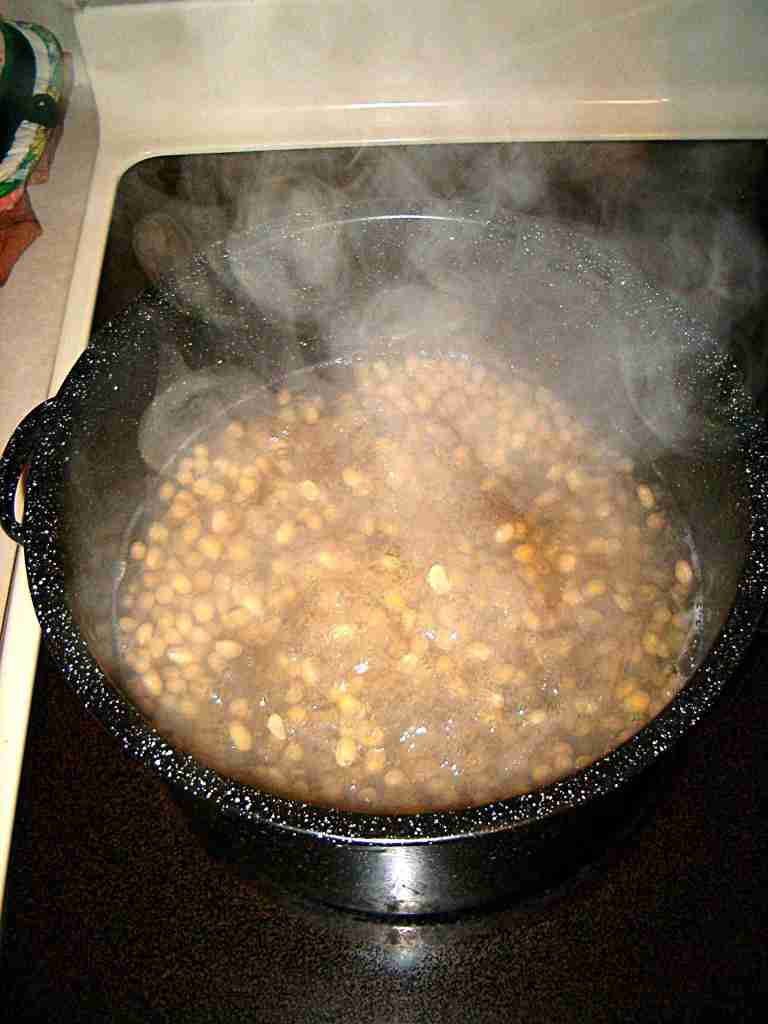
|
The first step is to de-hull the beans. Boil whole soy beans 15 minutes, then turn off and allow to sit 2 hours. |
| 3 |
Drain water off of beans and use a shallow baking dish and potato masher to split beans. Dump split beans and hulls into another pot. |
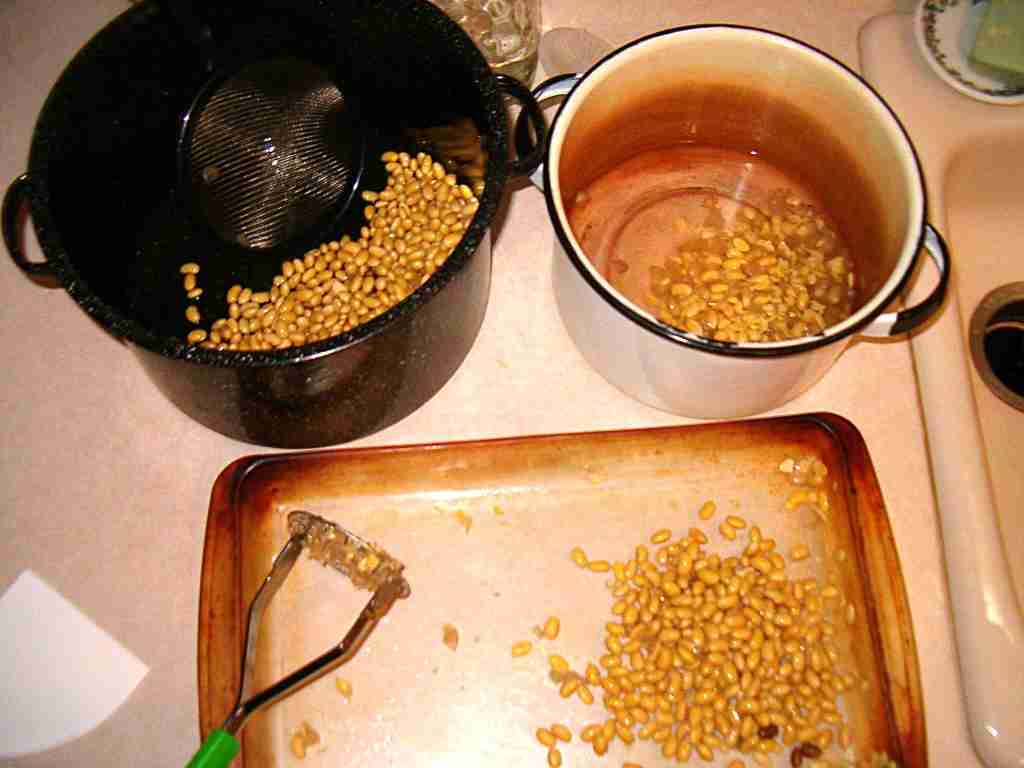 |
| 4 |
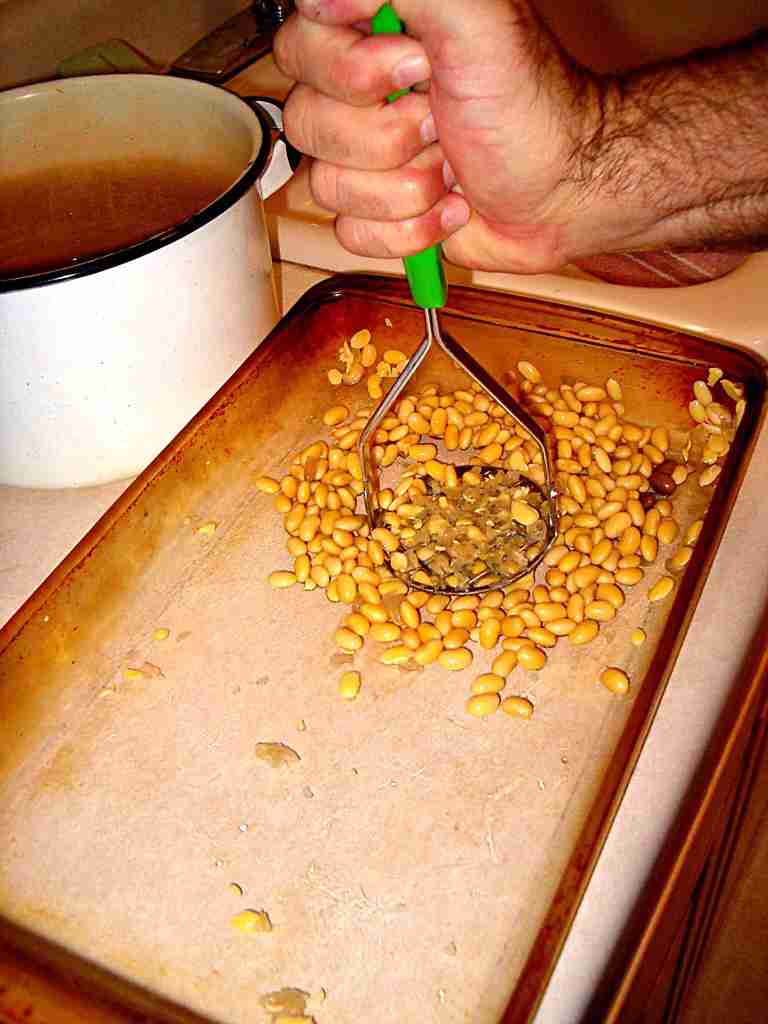
|
A firm “rocking” motion with the masher works well to split the beans and liberate the hulls. |
| 5 |
Add water to the pot you’re putting the beans and hulls into and use a strainer to skim the hulls off. |
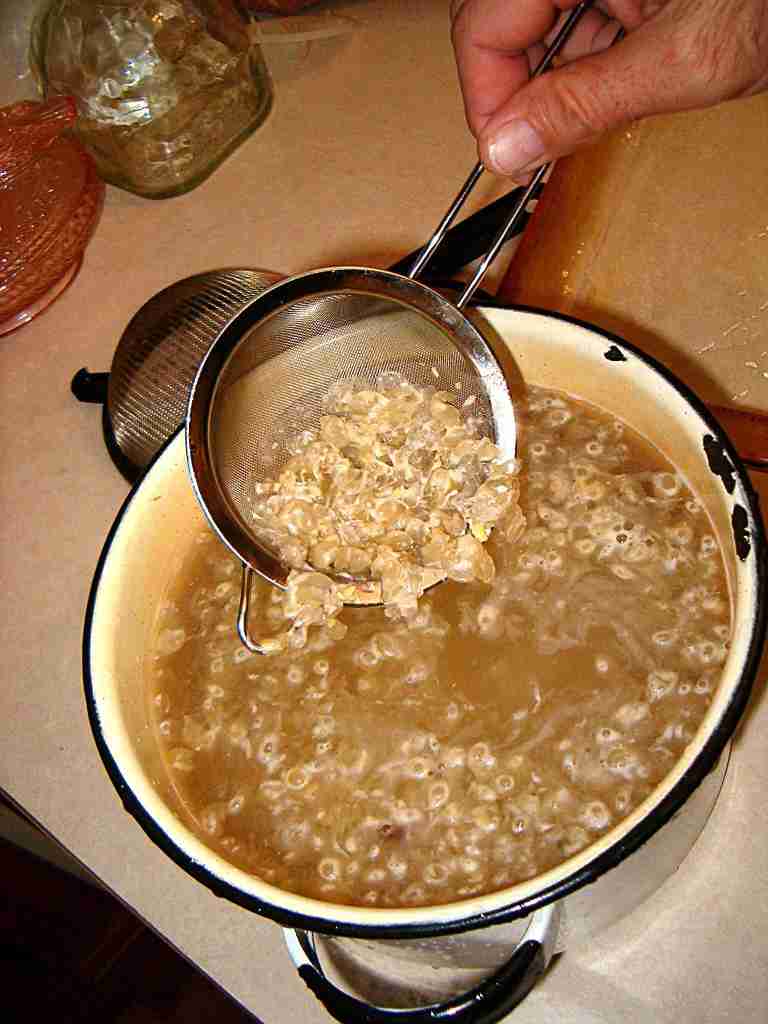 |
| 6 |
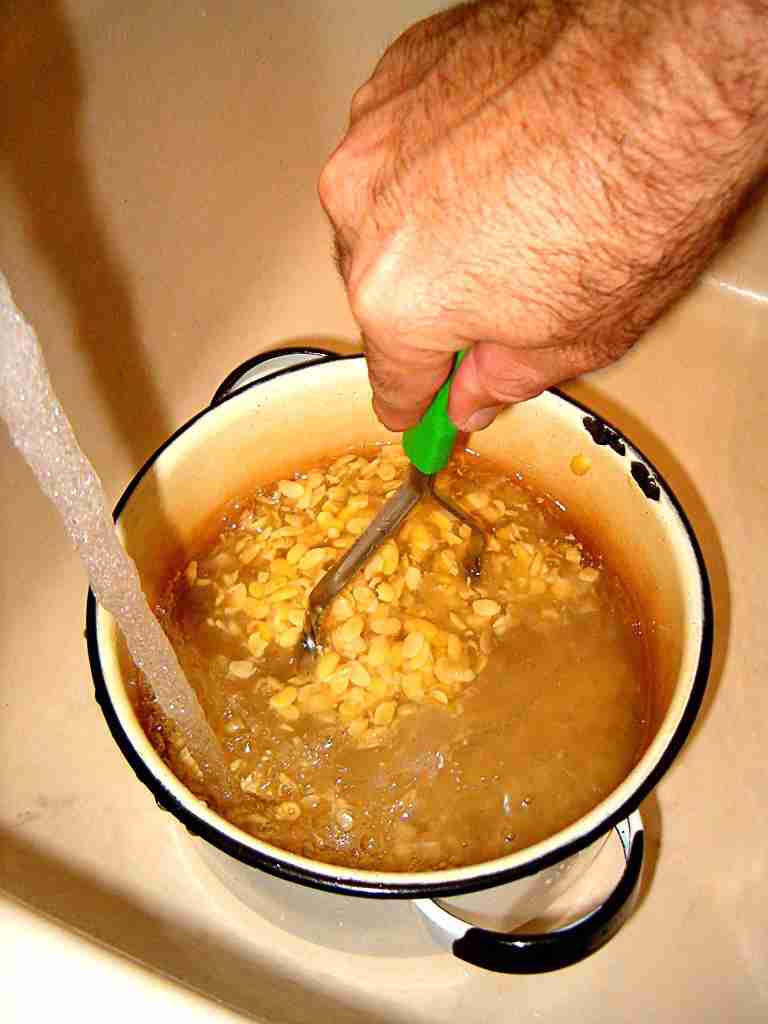
|
After skimming the hulls, mash the beans some more in the pot to liberate more hulls. The de-hulling step is the hardest part – it takes me about 10 minutes for 2 cups of beans. |
| 7 |
Boil the beans for another 30 minutes after the hulls are removed to finish cooking them. |
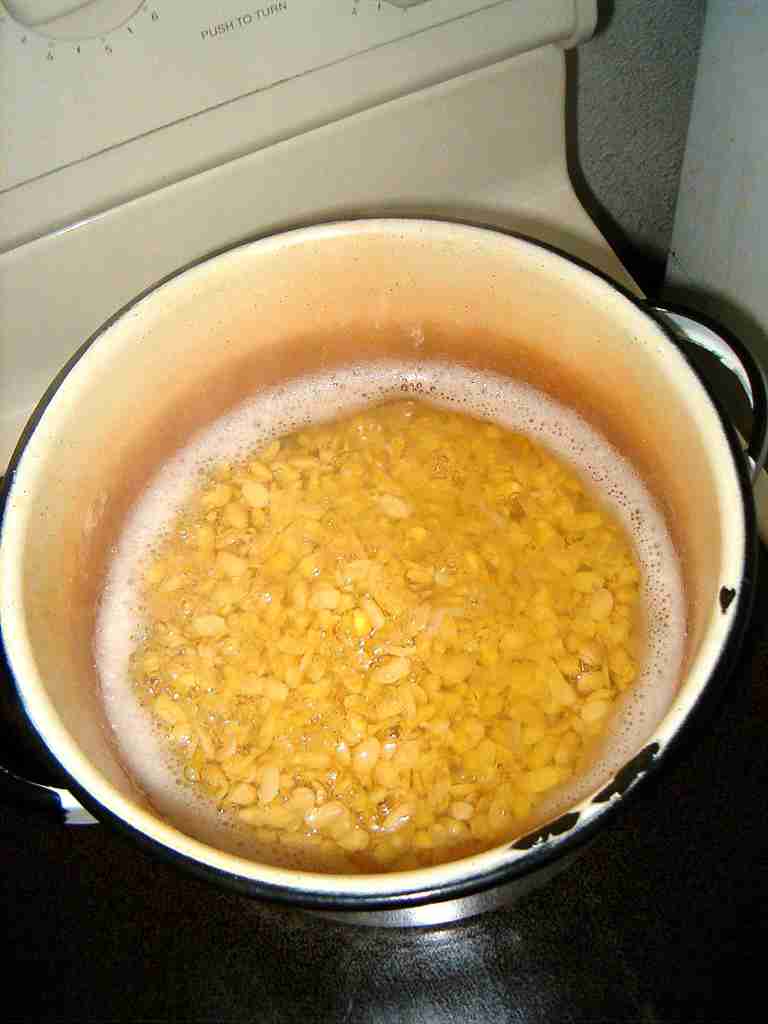
|
| 8 |
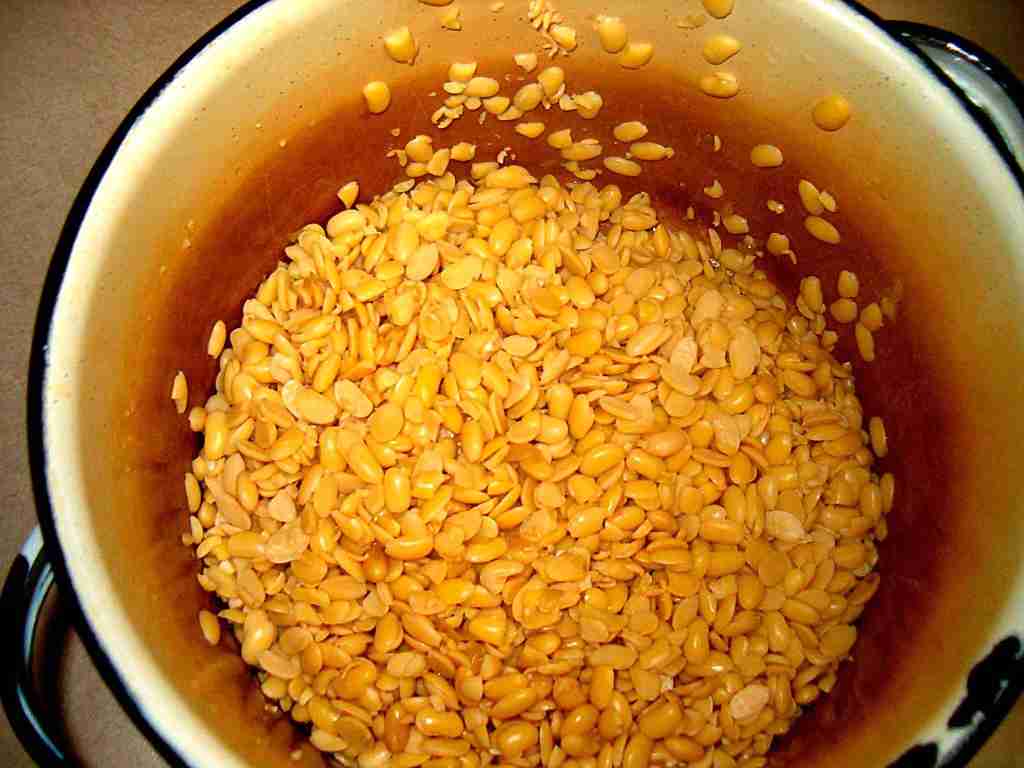
|
The de-hulled beans are now ready for drying. Put the drained beans in a clean lint free towel and dry them until they are “surface dry.” |
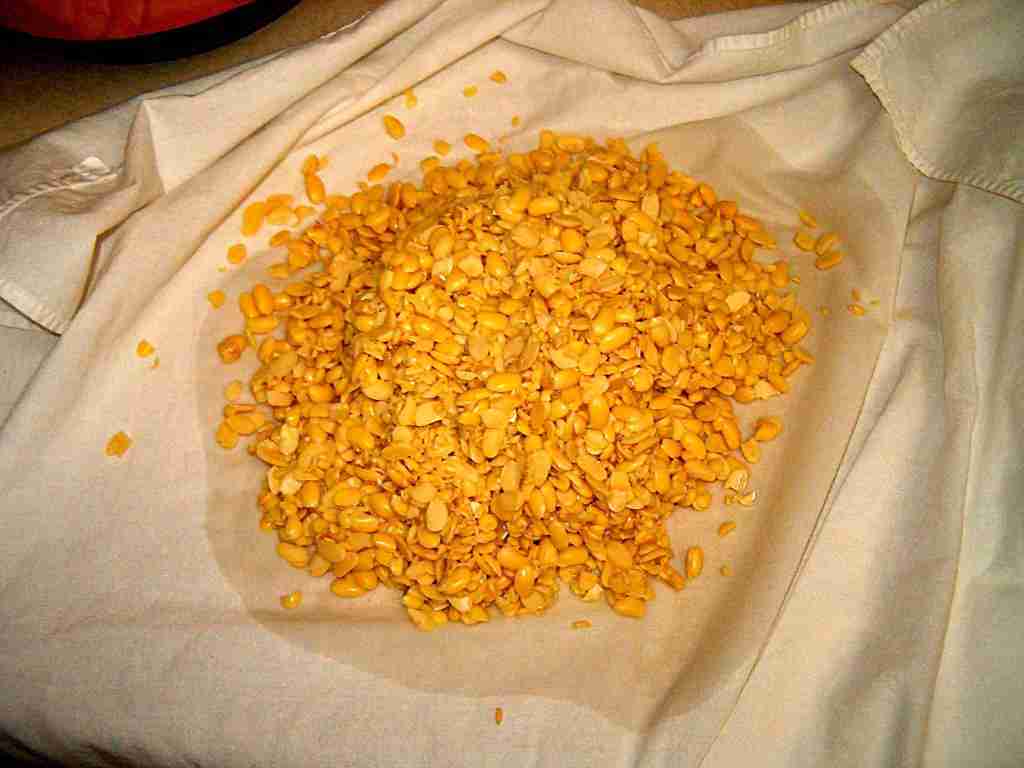
|
| 9 |
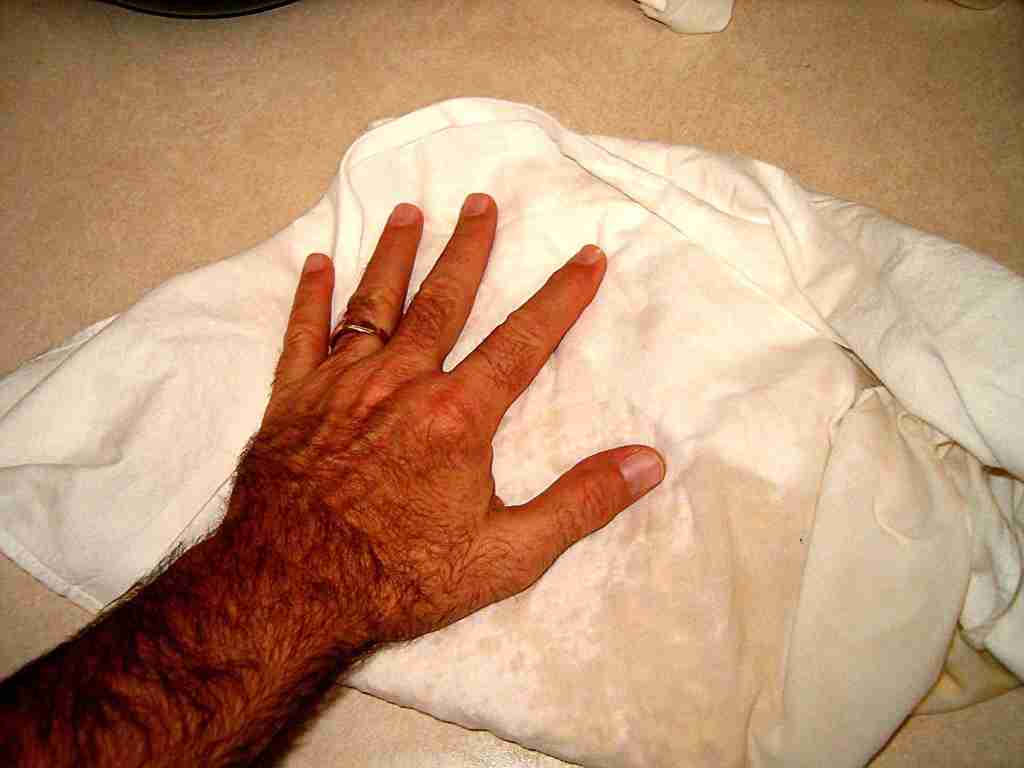
|
Knead them gently in the towel to dry them and then put them in a mixing bowl to inoculate them. |
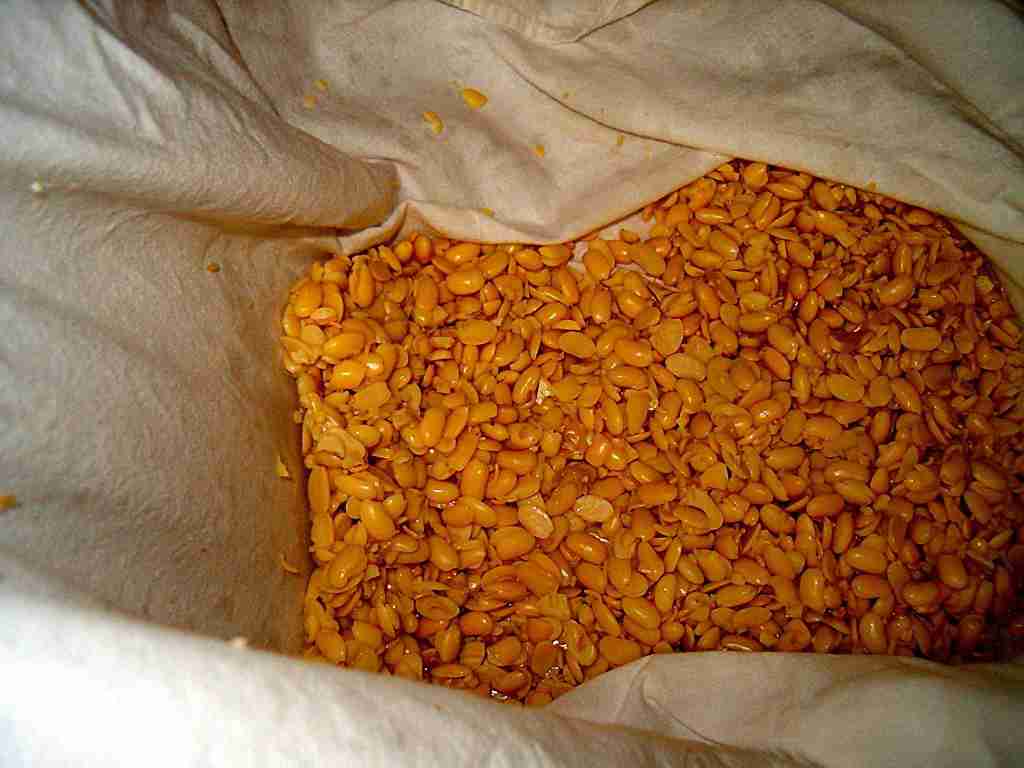
|
| 10 |
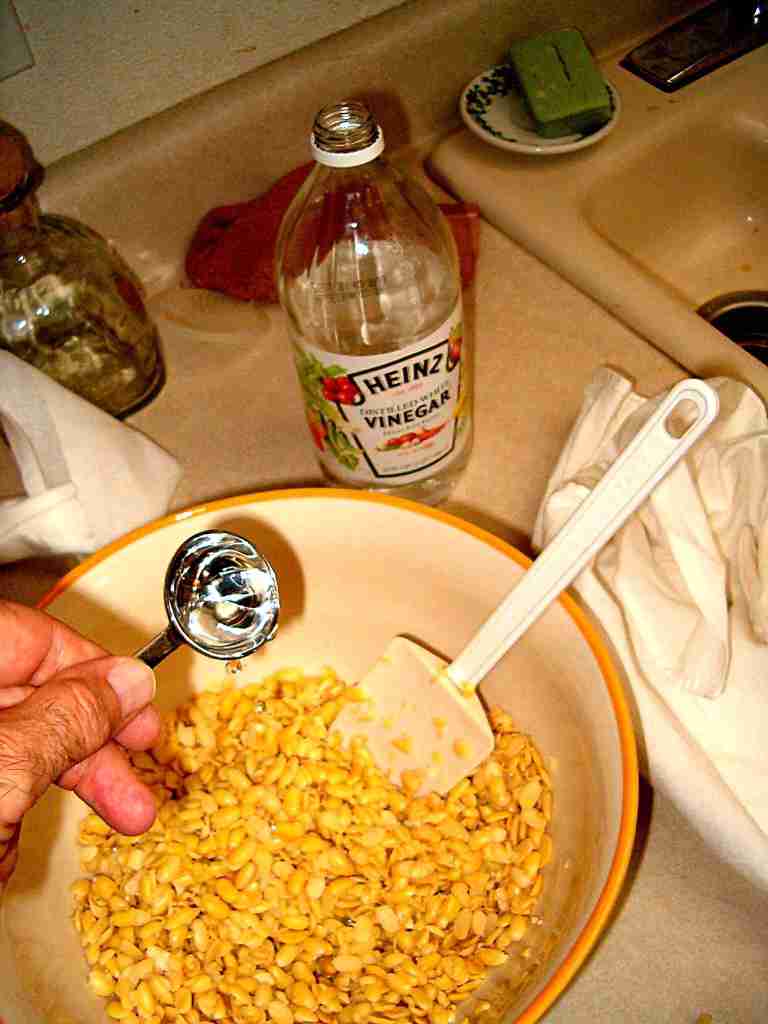
|
Add 2 tablespoons of vinegar to the beans and mix well. Then add 3/4 teaspoons of tempeh starter to the beans and mix well again. |
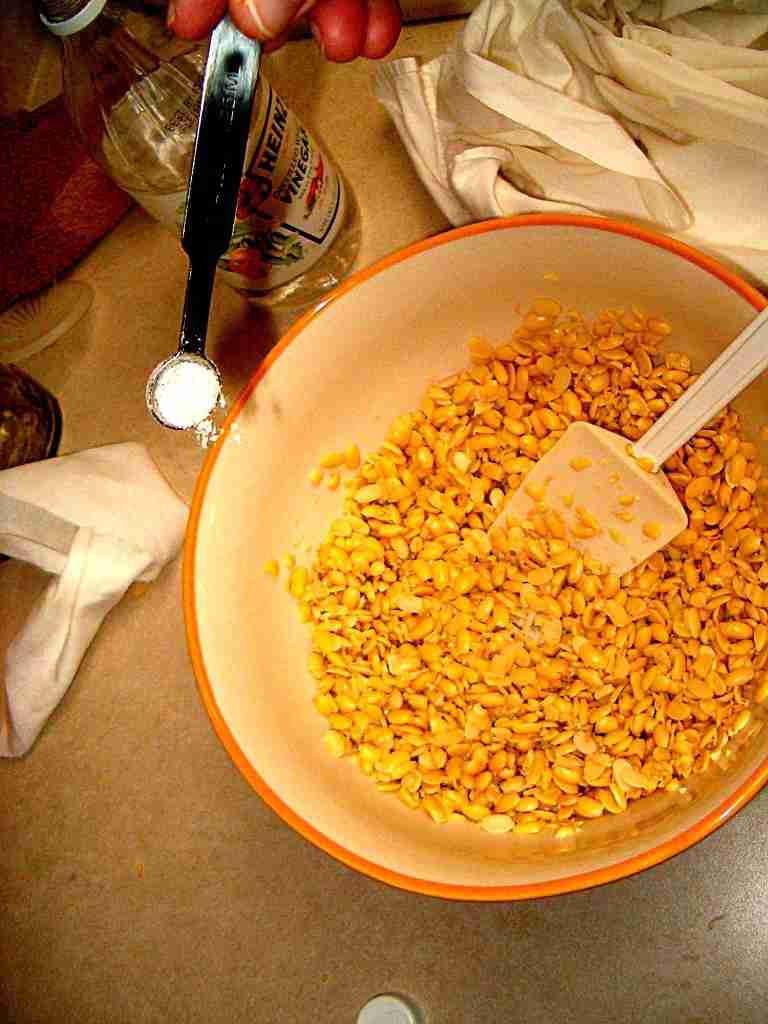
|
| 11 |
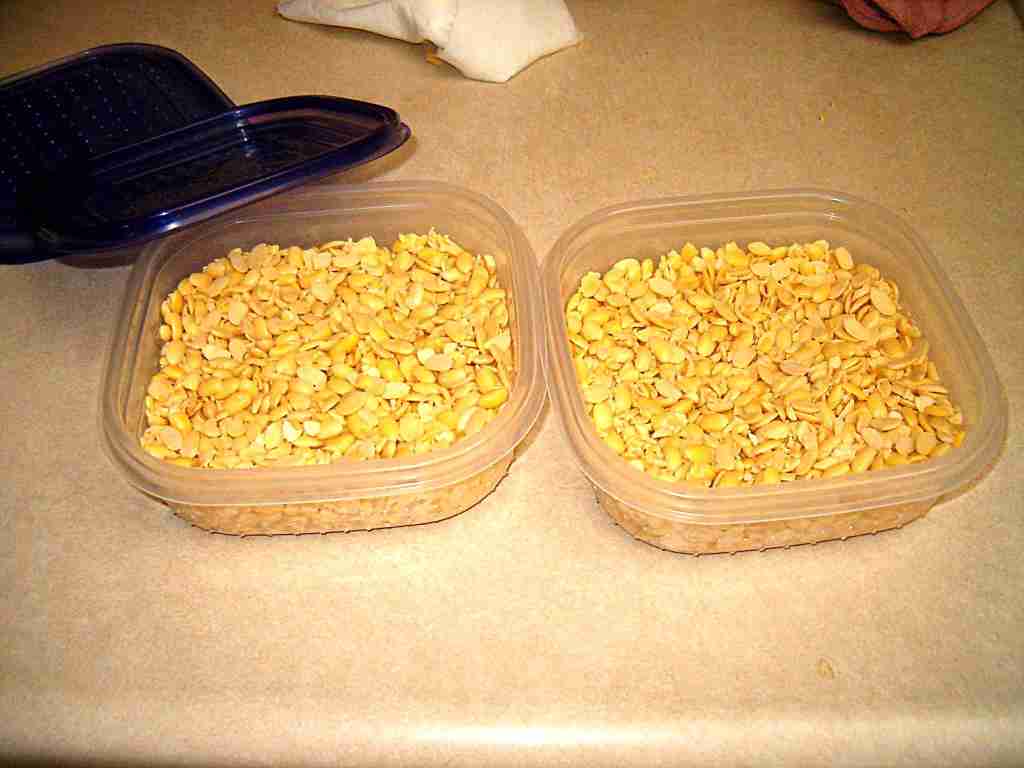
|
Lightly pack the beans into the vented containers to about 1/2 to 1 inch deep. (I make mine about 1 inch thick.) |
| Here’s my setup for an incubator. I use one of my kitchen cabinets in which I placed a heat source (a lamp with a dimmer switch) and a thermometer. (My thermometer happens to be a function on my multimeter.) I have placed the Tempeh containers on a wire rack to facilitate air circulation. I adjust the light dimmer switch temperature as required to maintain the temperature in the cabinet to between 85 to 95 degrees F – trying to keep the temperature of the beans 88F for the first 12-15 hours until the Tempeh begins producing its own heat. At that point, I begin dimming the light and eventually turning the light off. I close the cabinet door and check the temp every hour or so, but not after I go to bed. |
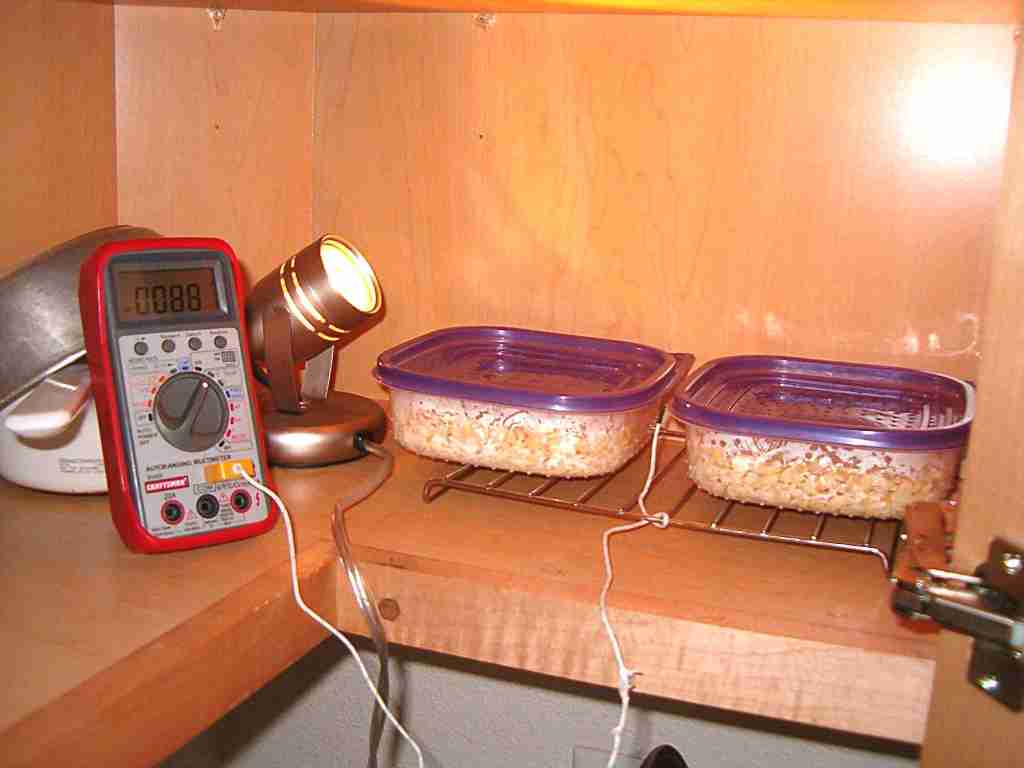 |
| 13 |
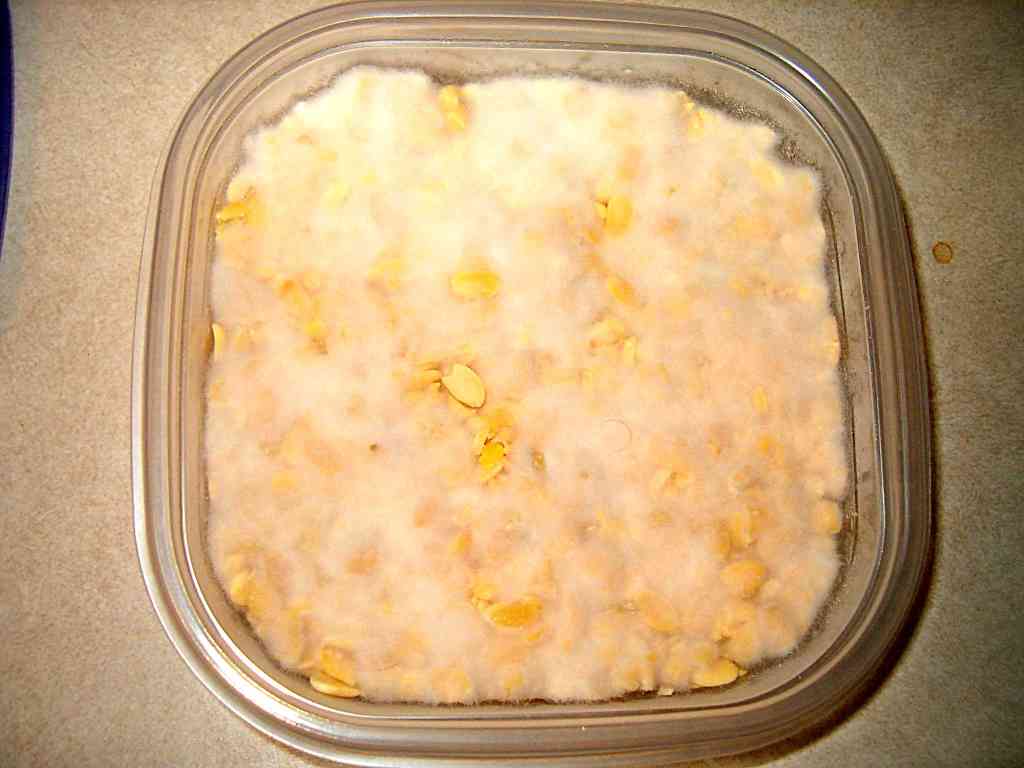 |
Here’s the Tempeh at about 23 hours after inoculation with the starter. The white mycelium is starting to cover the entire surface of the beans, only a couple of more hours to go! |
| 14 |
Here’s a look at the inside of the finished Tempeh at about 26 to 30 hours after inoculation. The white mycelium has grown though the beans and created a dense, nutty smelling Tempeh. At this point I steam the Tempeh over boiling water (using the colander) for 20 minutes, and then slice them in half to make patties about 1/2 inch thick. I soak the patties overnight in salt water made from 2 teaspoons of salt per pint of water, then dry and freeze the patties. When I want to eat them, I take them out of the freezer the day before, let them thaw and fry them up. |
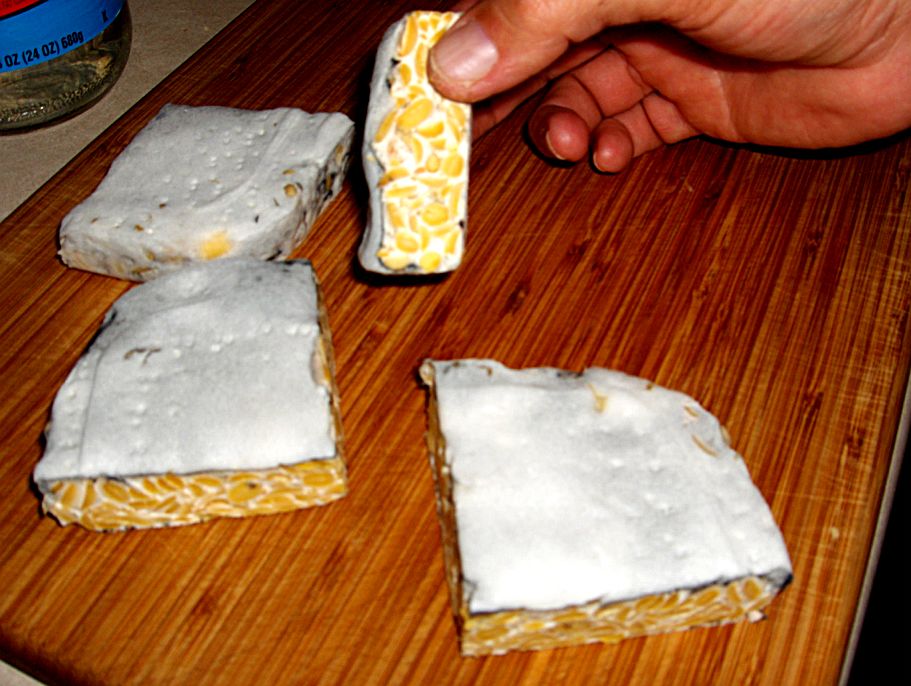
|
| Here’s one way we like to eat our Tempeh – fried with a little soy cheese melted on top, on toasted homemade bread, BBQ sauce and some fresh lettuce – oh, and lots of vegan mayonnaise!Tempeh Bacon is another fun way to eat Tempeh. Thinly slice the Tempeh into strips and place in the following marinade for 1 hour to 5 days, then pan fry or deep fry until golden brown and crispy. |

|

TEMPEH BACON MARINADE
Water – 1 pint
Salt – 1 teaspoon
Garlic Powder – 1 teaspoon
Liquid Smoke – 1 tablespoon
You may, of course, adjust these ingredients according to your taste



















